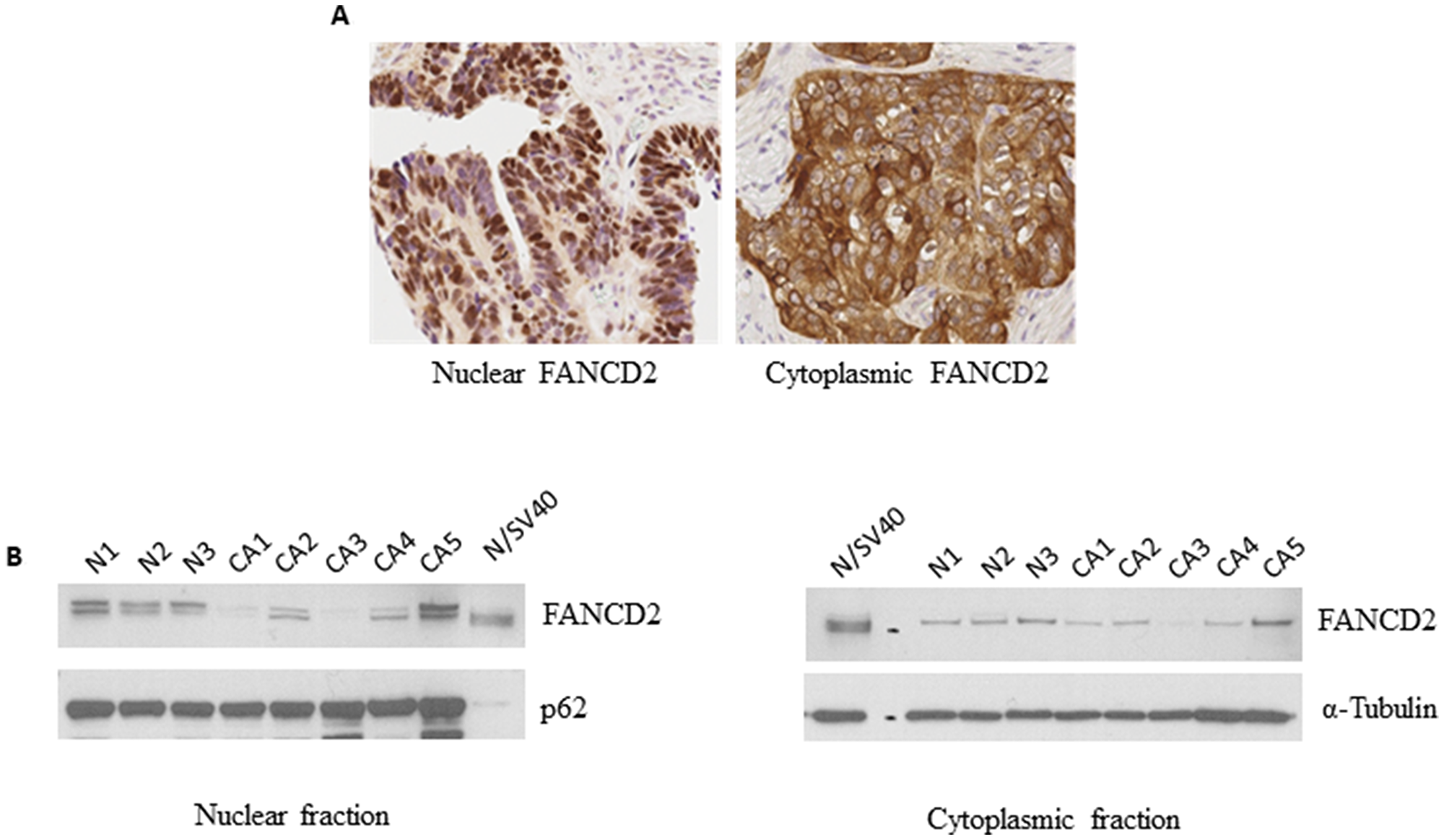Oncotarget Volume 11 Issue 8 reported Nuclear and cytoplasmic localization of FANCD2 was observed in OSEs from both normal and ovarian cancer patients.
Patients with cytoplasmic localization of FANCD2 experienced significantly longer median survival time, versus patients without cytoplasmic localization of FANCD2.
The authors results suggest that the presence of cytoplasmic FANCD2 modulates FANCD2 activity resulting in better survival outcome in ovarian cancer patients.
Dr. Tanja Pejovic from the Department of Obstetrics and Gynecology at Oregon Health & Science University as well as the Division of Gynecologic Oncology at the Oregon Health & Science University and Knight Cancer Institute in Portland Oregon said, "Early stage ovarian cancer is often characterized by a lack of specific symptoms leading to a late stage diagnosis."
"Early stage ovarian cancer is often characterized by a lack of specific symptoms leading to a late stage diagnosis"
- Dr. Tanja Pejovic, Department of Obstetrics and Gynecology, Oregon Health & Science University
Although the FA genes are phylogenetically unrelated, mutations in these genes result in a common FA phenotype implying that the proteins encoded by these genes function in a common cellular pathway.
FANCD2 is a central protein in the FA pathway and aberrations in the FA genes result in defects in mono-ubiquitination of FANCD2.
FANCD2 / mice have been reported to have an increased incidence of epithelial cancers such as breast, ovarian and liver cancers.

Figure 1: FANCD2 is present in the nucleus as well as the cytoplasm (A) Representative immunohistochemistry nuclear (left) and cytoplasmic (right) staining of FANCD2 in a tissue microarray with clinically annotated ovarian tumor tissue (B) Nuclear (left) and cytoplasmic (right) expression of FANCD2 in primary ovarian surface epithelium cells from normal and ovarian cancer patients by Western blotting.
Reduced expression of FANCD2 has been reported in sporadic and hereditary breast cancer and in OSE cells from women with high risk of developing ovarian cancers.
As a DNA repair protein, the function of nuclear FANCD2 has been extensively studied, but more recent studies have also shown an important role for FANCD2 in the cytoplasm.
The Pejovic Research Team concluded in their Oncotarget Research Article "we have shown that cytoplasmic localization of FANCD2 suggests a favorable prognosis but the function of cFANCD2 remains to be identified. Our continued research effort is directed towards understanding the mechanisms regulating the subcellular localization of FANCD2 and the function of FANCD2 beyond DNA repair."
Sign up for free Altmetric alerts about this article
DOI - https://doi.org/10.18632/oncotarget.27437
Full text - https://www.oncotarget.com/article/27437/text/
Correspondence to - Tanja Pejovic - [email protected]
Keywords - FANCD2, ovarian carcinoma, subcellular localization
About Oncotarget
Oncotarget is a biweekly, peer-reviewed, open access biomedical journal covering research on all aspects of oncology.
To learn more about Oncotarget, please visit https://www.oncotarget.com or connect with:
SoundCloud - https://soundcloud.com/oncotarget
Facebook - https://www.facebook.com/Oncotarget/
Twitter - https://twitter.com/oncotarget
LinkedIn - https://www.linkedin.com/company/oncotarget
Pinterest - https://www.pinterest.com/oncotarget/
Reddit - https://www.reddit.com/user/Oncotarget/
Oncotarget is published by Impact Journals, LLC please visit https://www.impactjournals.com/ or connect with @ImpactJrnls
Media Contact
[email protected]
18009220957x105


